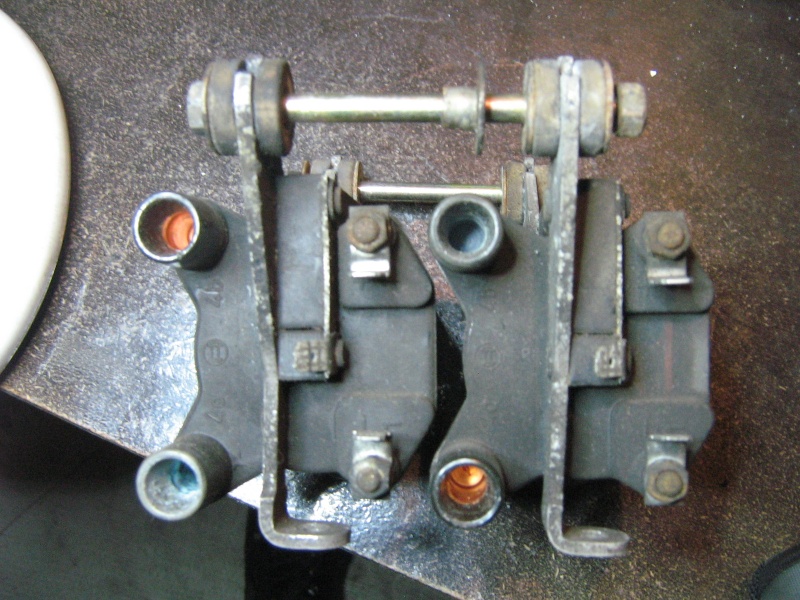just for clarificaition on the older coils
if you have copper cables you could benefit from resistor type plugs . or resistive plug tops, but never both should be used
most cables these days have some resistance inherant to them ...such as silicon types and the newer versions and variations of the same and stock oem bmw leads (about 8-10 k per metre)
the idea is to limit the resistance values from high voltage post of the coil to tip of spark plug electrode to about 5 k total on each leg
this use of resistance is to comply with emi (rf noise ) regulations ...and is generated by the ignition pulse of rf into the air which affects any radio receiver nearby . by limiting the spark current the rf is significantly reduced .
many of us remember the older 60s era vws that you could hear comming past on your radio receiver, which was verry common
further to that
if you happened to fit resistive plugs
and resistive leads you could well damage the coil .
when the coil fires you are actually firing a pulse to each of the spark plugs that share the coil
that pulse is limited in its amplitude by the loading (resistance ) of the ignition lead to spark gap and earth .
so if you have higher resitance in the leads you will have less spark energy available at the plug .
if you happen to have more resistance than say 10k in each leg of the ignition coils , the terminal voltage produced by the coil is excessive , as lighter loading (or higher resistance ) to let the pulse disapate will cause a higher terminal voltage across the coil.
this could cause cross firing of the coil secondary between layers internally, eventually causing failure of the coil pack (see pic below).
likewise if you have poorly connecting plugtops and or coil connections, this effect could likely cause a failure long term .
in each case above you will have lower available spark energy available at the spark gap ...causing lower power to the motor (or the effective ignition spark and air- fuel charge burn )
note if you have just one lead connection issue it will reduce the effectiveness of spark to both cylinders connected to the same coil
for some this might not be immediatly noticeable , especially on frequent short trips . but the results are self evident .
here are a couple of coils imported from uk ,,,still operational but no measureable resistance from one high volt tower to the other

could this explain why these coils are in a "sell off" (part out) of a k ....that performed poorly ?
in any case it seems to me that these coils we remooved from a poorly maintained system , and possibly corrosion affected by the wet road conditions experienced over there .
i believe the red top coils measure differently to the all black
the red top coils about 12.6 k whilst the black about 10.2k on the secondarys

secondary primary
from the circuit above you can see that if you add any resistance to either of the leads it will affect the whole circuit involved as there is no other earth reference .... in difference to a high number of conventional car type systems where the secondary of the coil is effectivly earthed and each lead (through distributor) is treated as individual .
hope that helps


 1984-85 K100 ignition coils Wed Jun 12, 2013 10:53 pm
1984-85 K100 ignition coils Wed Jun 12, 2013 10:53 pm














 My "take away" from your very complete explanation is that, if I don't replace those coils, I'm apt to find myself standing on the side of a desolate Nevada highway yet again! (I've been trying to ride to New Mexico for two years running. Both attempts ended in failure in the middle of nowhere!)
My "take away" from your very complete explanation is that, if I don't replace those coils, I'm apt to find myself standing on the side of a desolate Nevada highway yet again! (I've been trying to ride to New Mexico for two years running. Both attempts ended in failure in the middle of nowhere!) 1988 K100RS SE/ABS
1988 K100RS SE/ABS